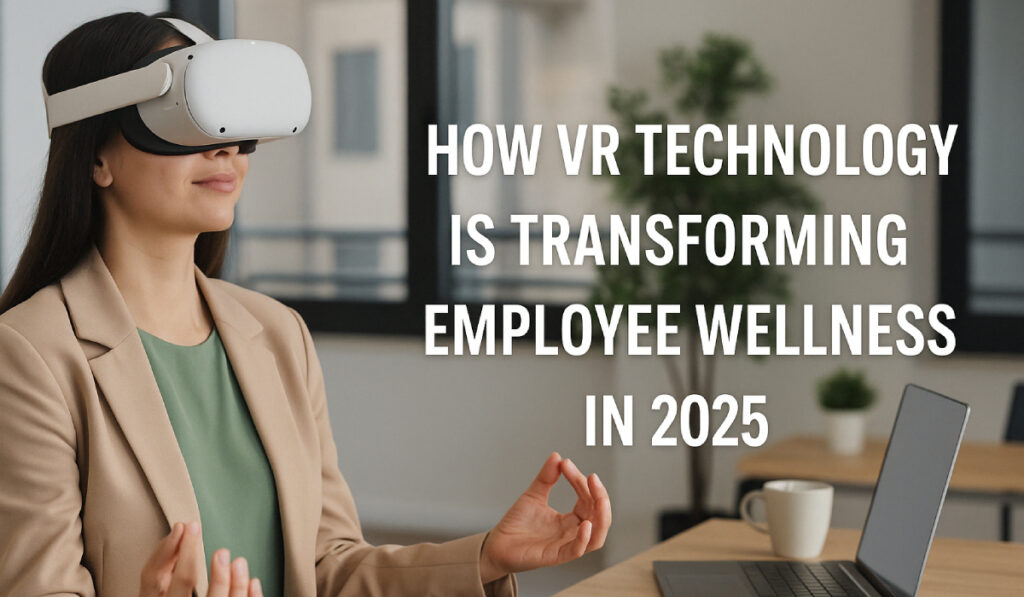In 2025, burnout isn’t just a buzzword—it’s a business concern.
With back-to-back meetings, digital fatigue, and rising stress levels, companies are under growing pressure to prioritize employee wellbeing. But traditional wellness programs often fall short—either too generic or too hard to stick with.
Enter Virtual Reality—a quiet revolution in the corporate wellness playbook.
Why Mental Wellbeing Needs a New Approach
Most companies offer some version of wellness support: counseling hotlines, meditation apps, flexible hours. But participation rates remain low. Why?
Because employees crave experiences that feel personal, immersive, and easy to access—not another thing to “log in” to.
VR solves this gap by transporting users into calming, focused environments—right from their desks or wellness rooms.
1. Instant Mental Reset with VR Journeys
Imagine stepping out of a high-stress meeting and, within seconds, being transported to a quiet forest where birds chirp and streams flow.
VR offers 5–10-minute guided mindfulness sessions for corporate employees decompress, reset, and return with more clarity—without needing to leave the office.
🌿 Employees using VR-based relaxation tools report a 68% drop in perceived stress levels.
2. Combating Burnout with Guided Meditation in VR
Unlike static apps, VR meditation engages the senses. Employees can:
-
Follow guided breathing exercises in serene landscapes
-
Experience floating through space or under the ocean
-
Take microbreaks that feel like vacations
It’s not just soothing—it’s scientifically designed to reduce cortisol levels and stimulate relaxation.
🧘 Companies using VR meditation saw a 53% improvement in employee mood scores in internal assessments.
3. Personalized Mindfulness That Adapts to Workload
The best part? VR isn’t one-size-fits-all. Some prefer quiet forests, others love cosmic journeys or chakra healing environments.
Modern VR mindfulness systems adapt to user preferences, offering personalized journeys that resonate with each individual’s state of mind and emotional needs.
4. Better Focus, Better Output
Mental clarity fuels productivity. With just a few minutes of VR mindfulness per day, employees return to work more focused, alert, and engaged.
🔁 Teams using daily VR breaks reported a 21% boost in task completion efficiency and fewer errors.
5. Breaking the Stigma Around Mental Health
VR offers a private, stigma-free space where employees can manage stress and anxiety, making it one of the most unique and effective workplace wellness idea. Unlike therapy sessions that some may hesitate to attend, VR offers immediate, anonymous access to mental wellness tools—right when it’s needed most.
This makes wellbeing feel approachable, modern, and judgment-free.
6. Cost-Effective and Scalable for Companies
Compared to one-on-one therapy or frequent wellness events, VR is a scalable investment. Once deployed, it serves thousands of employees, without requiring additional resources each time someone uses it.
💼 A Fortune 500 company estimated saving over $300,000 annually in productivity loss and absenteeism by integrating VR wellness into their employee support programs.
More HealthCare Blogs, Visit :- https://theguestblogs.com/category/health/
Final Thoughts
In 2025, supporting mental health isn’t just the right thing to do—it’s a business advantage. And Virtual Reality is proving to be one of the most powerful tools in the wellness arsenal.
It’s immersive, impactful, and incredibly human—even if it’s powered by tech.
For companies looking to future-proof their workforce, investing in VR mindfulness and mental wellbeing tools isn’t just a wellness initiative—it’s a strategic edge.






